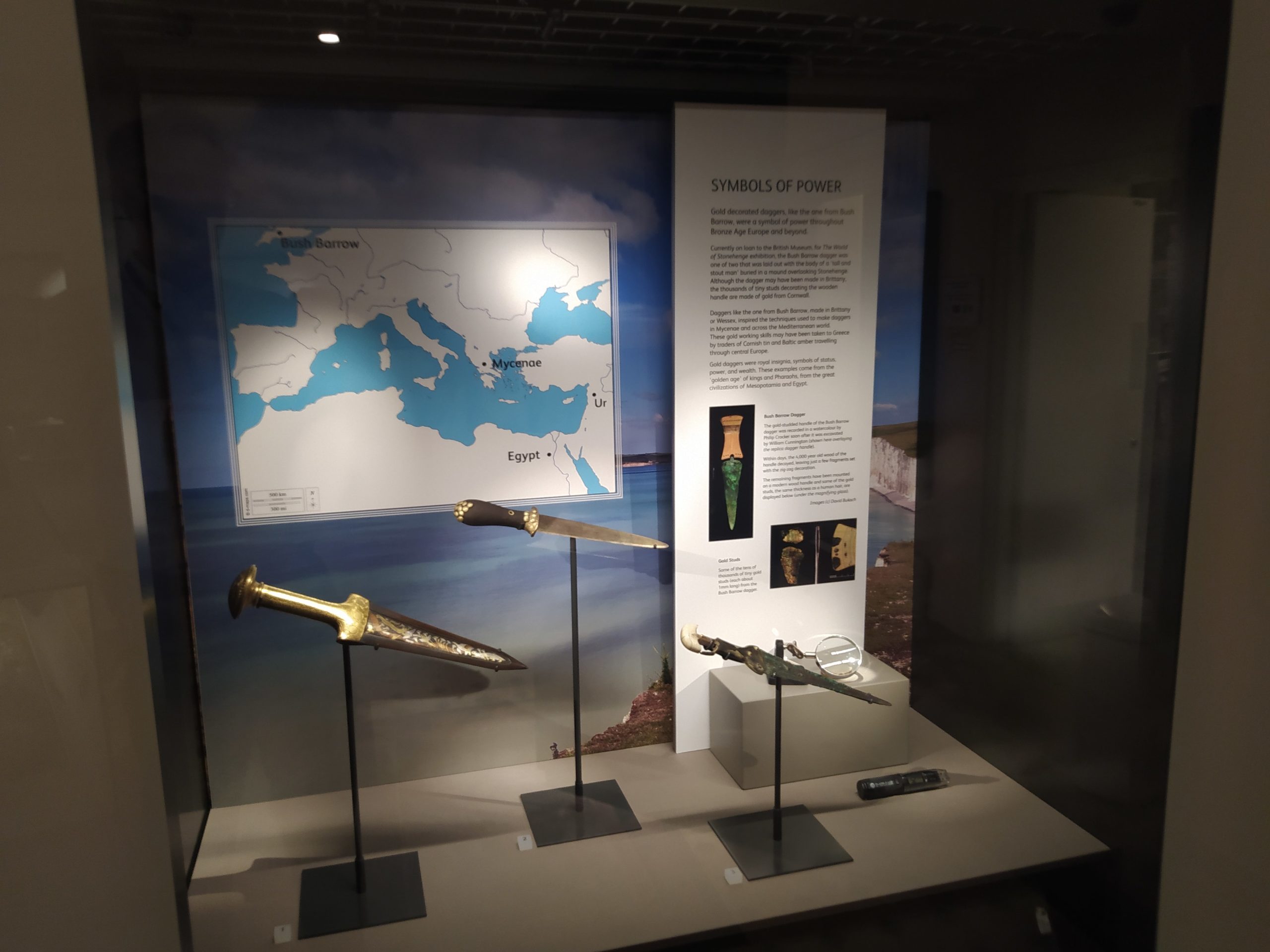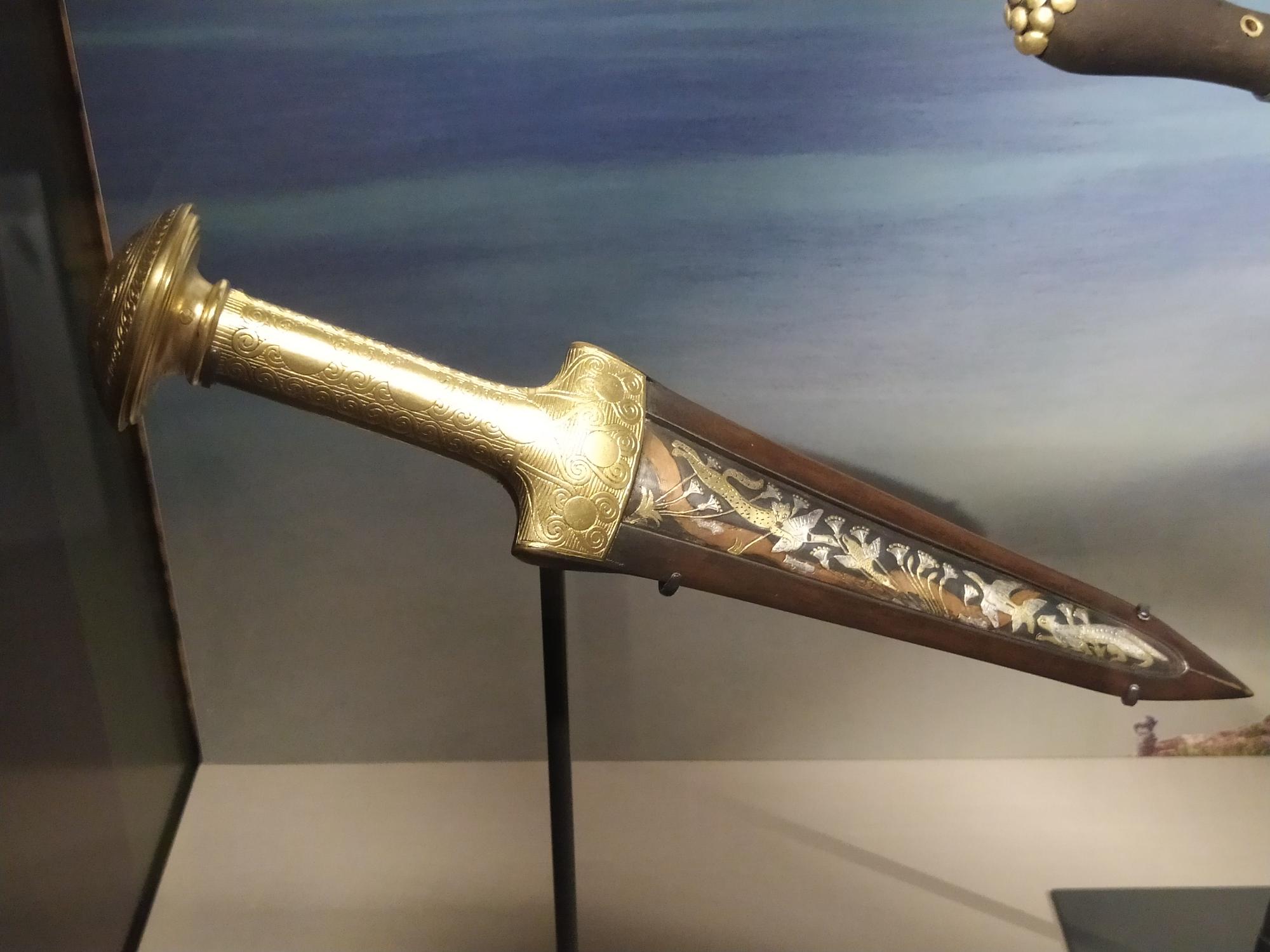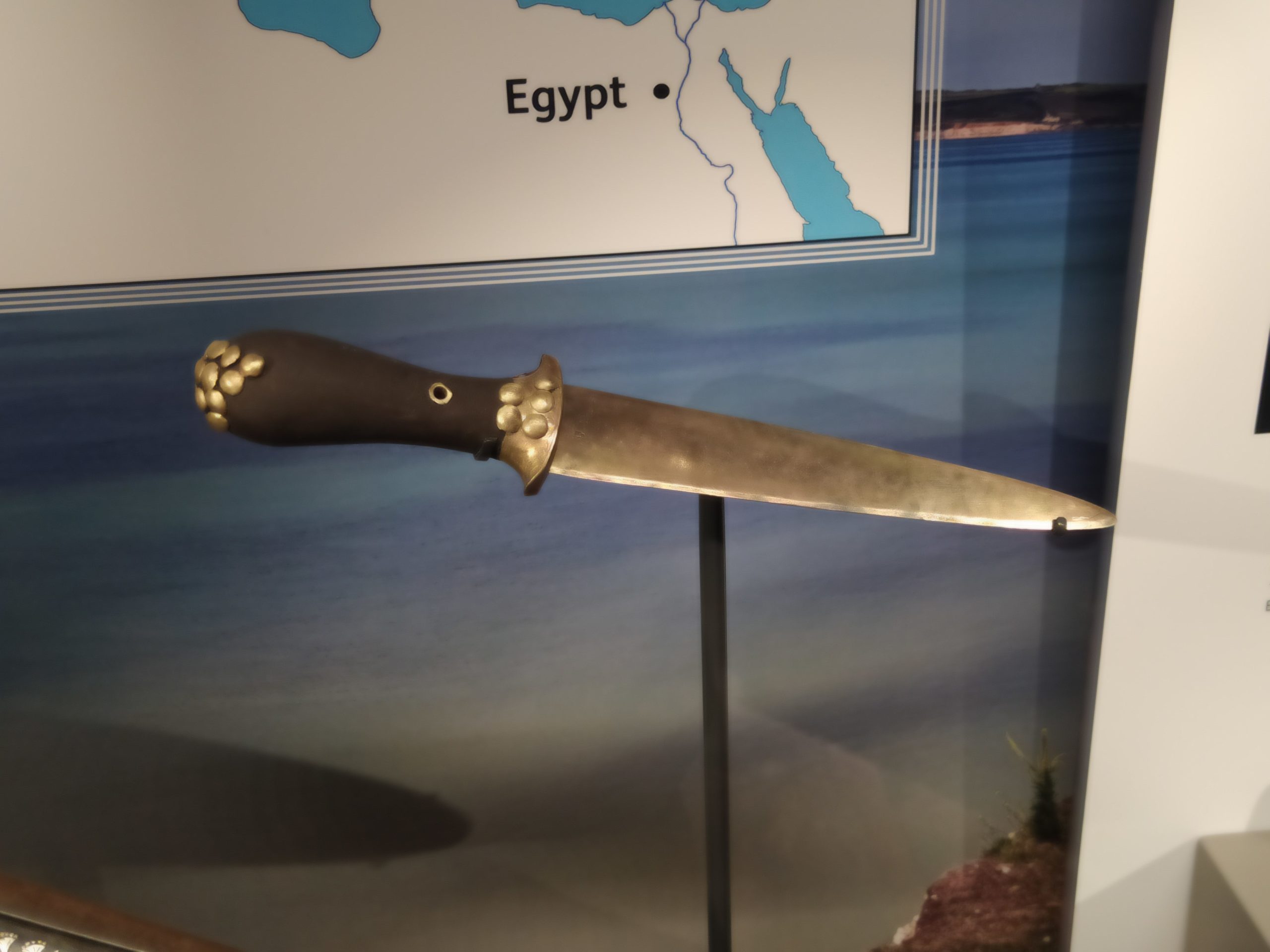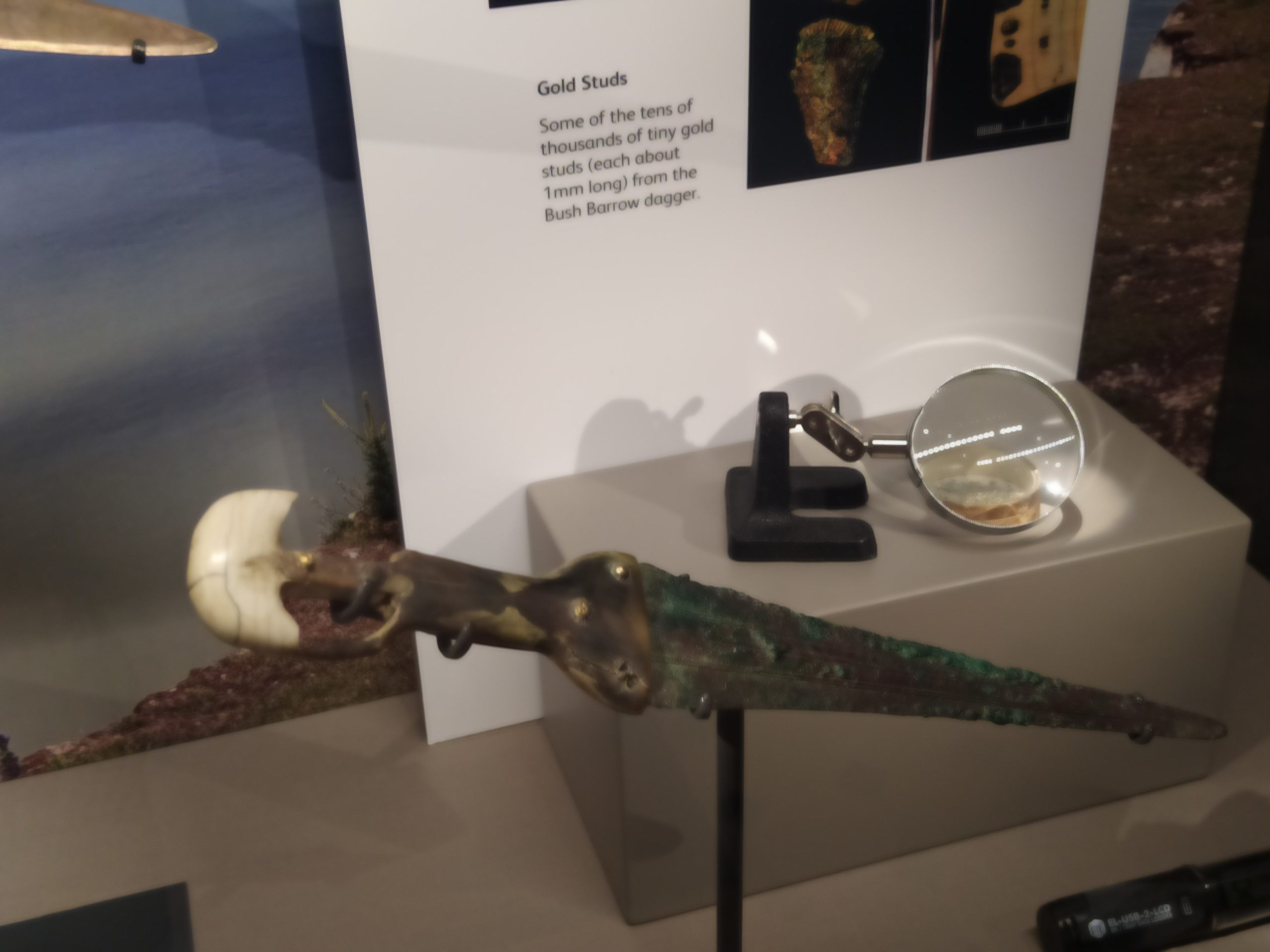Bronze Age Daggers: Symbols of Power
Gold decorated daggers, like the one from Bush Barrow found close to Stonehenge, were a symbol of power throughout Bronze Age Europe and beyond. The finds from Bush Barrow, Britain’s richest Bronze Age burial, are currently featured in the ‘World of Stonehenge’ exhibition at the British Museum.
The Bush Barrow dagger was one of two that was laid out with the body of a ‘tall and stout man’ buried in a mound overlooking Stonehenge. Although the dagger may have been made in Brittany, the thousands of tiny studs decorating the wooden handle are made of gold from Cornwall. Daggers like the one from Bush Barrow, made in Brittany or Wessex, inspired the techniques used to make daggers in Mycenae and across the Mediterranean world. These gold working skills may have been taken to Greece by traders of Cornish tin and Baltic amber through central Europe.
Gold daggers were royal insignia, symbols of status, power, and wealth. These examples come from the ‘golden age’ of Kings and Pharaohs, from the great civilizations of Mesopotamia and Egypt.

Electrotype dagger
Mycenae, Bronze Age Greece.
This is an electrotype replica dagger from Mycenae, in what is now southern Greece.
The inlaid gold decoration shows cats hunting ducks, a river with fish, and the water plant, papyrus. The original dagger dates to around 1600 BC and was found in Grave V Circle A, a royal cemetery situated outside the citadel and later enclosed within it. The site was excavated by the German archaeologist, Heinrich Schliemann in 1876. The original dagger is on display in the National Archaeological Museum of Athens.
This replica dagger was designed by Emile Gilliéron of Athens and made by the Württembergische Metallwarenfabrik, Germany. Circa 1900.
On loan from the Trustees of the British Museum

In this online lecture, Nikolas Papadimitriou presents the Mycenaean technique and discuss possible affinities with the Wessex and Armorican “gold-stud decoration”. Then, the artist Akis Goumas will present the experimental reconstruction of the two techniques and comment on the making process, the tools used and the skills required. Nikolas Papadimitriou and Akis Goumas visited the Wiltshire Museum in 2018 to study the Bush Barrow dagger during their research.
Between the 17th and the 15th c. BC a demanding gold-working technique was used for the decoration of prestigious weapons in Mycenaean Greece. The technique is attested only in very rich Mycenaean tombs, including Shaft Graves IV and V at Mycenae. A quite similar technique for the decoration of daggers is known from Bush Barrow, Britain’s richest Bronze Age burial close to Stonehenge which predates the Mycenaean examples perhaps by a century.
Gold dagger
Royal Cemetery at Ur, Tomb PG1618
Modern-day Tell el-Muqayyar, Dhi Qar Governorate (Iraq)
This gold studded ceremonial dagger was found with a man lying on his left side in a wooden coffin. On the skull were four headbands made from gold, lapis lazuli and carnelian, and a gold lunate earring. Beads from a gold and lapis lazuli necklace were found around his neck. He wore of wig with gold hair-rings. Inside the coffin there was also a bronze bucket and axe, copper bowls and ladle, and a silver bowl. Excavations at Ur uncovered more than 1,800 burials and 16 royal tombs. The gold used to make this dagger came from Iran showing long distance trade connections. Carnelian was traded from the Indus Valley, and the lapis lazuli comes from Afghanistan.
2600 BC (Early Dynastic III).
On loan from the Trustees of the British Museum

Bronze dagger
Egypt (provenance unknown)
This bronze dagger has a ribbed blade, a hilt made from animal horn with gold-headed rivets, and an ivory pommel. It was made during the ‘golden age’ of the Middle Kingdom, when ancient Egypt was ruled by Pharaohs, and created some of its greatest works of art and literature.
2040 - 1782 BC / Middle Kingdom
On loan from the Trustees of the British Museum


